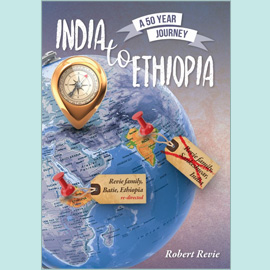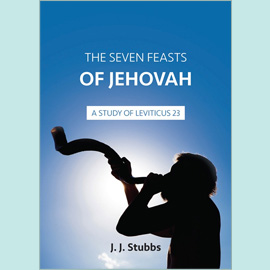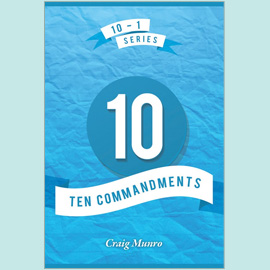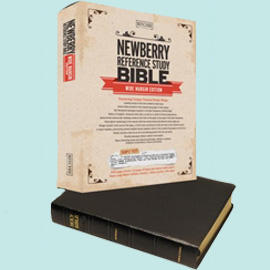The Fact of Resurrection Denied -
The Logical Proof (vv.12-34, cont)
The Resurrection and Godly personal activities -
Testimony (vv.29-34)
Three questions are posed; the answer is patent and clear - the resurrection of the dead.
A Question as to Baptism (v.29): "They" - believers. Despite the difficulty associated with the text, Harry Lacey was right when he stated that the simplest explanation is invariably the best. We are faced with the significance of baptism which at the time of writing was a costly business. It brought excommunication, family rifts, and sometimes even death. What was the point of getting baptised and paying a high price if the significance only involved death and burial? If this was as far as the significance of baptism went, effectively Christ was still dead and buried.
Baptism is only really valid if it symbolises resurrection and identifies me with a risen Christ. Symbolically, if Christ is not risen I am left at the bottom of the baptismal grave. I am not raised to walk in newness of life. This is nonsense. I am identified in baptism with the death, burial, and resurrection of Christ. Apart from a risen Christ there would be no believers' baptism, no breaking of bread, no church, and we would still be celebrating the Sabbath. As this is not the case, we believe in a risen Saviour.
A Question as to Battling (v.30): "We" - the apostles. The apostles were constantly in the front line of the battle. They were in danger from persecution and some of them even death. Why would they put themselves under such pressure and accept such "terms of employment" from their Lord and Master if death was their only prospect? No, they were anticipating a glorious resurrection and a rosy future in heaven. They lived daily in the strength of their conviction of the resurrection of the dead.
A Question as to Beasts (vv.31-32): "I" - Paul. Think of the perils catalogued concerning Paul in 2 Corinthians 11.23-33. Remember how he was stoned and left for dead at Lystra (Acts 14.19-20). Many were martyred for their faith and died in horrific circumstances; tortured, burned alive, fed to lions. Paul had trouble in Asia, "pressed out of measure, above strength, insomuch that we despaired even of life: But we had the sentence of death in ourselves, that we should not trust in ourselves, but in God which raiseth the dead" (2 Cor 1.8-9; Acts 19.29ff).
Paul's argument is this: why put myself through such daily torture if at the close of the day I end up dead. The world's philosophy is far more attractive: "Eat and drink for tomorrow we die". Paul accepts all the privation and persecution because he knows there is a bodily resurrection of the dead, a home in heaven, and a reward to be presented by the Lord himself, to all those that love his appearing. Whether Paul was hypothesising about the beasts at Ephesus or whether the beasts were depraved human beings matters not. He did not count his life dear to himself but put all on the altar for the Lord because of his complete confidence in the truth of the resurrection of the dead.
The question of v.12 has been answered. The section closes with exhortation. We are presented with a church at Corinth which has disgraced itself. The assembly, through its elders, had allowed unsaved folk into "fellowship". These unbelievers were denying the resurrection of the dead and they were corrupting genuine believers and affecting their characters for the worst. The apostle gives the church and its overseers a wakeup call. This is a timely warning for local assemblies to scrutinise applicants for fellowship.
The Form of the Resurrection Disputed: "With what body do they come"? (vv.35-49) -
The Lesson Prompted (vv.35-38)
The range of bodies (vv.35-42a) –
Divine variety
Paul pours scorn on the disputing "some", rebranding then as "fools". We are too tolerant of false teachers today. Paul believed in calling a spade, a spade and not a gardening implement! He proceeds to demonstrate that producing a glorified body for resurrected saints is not problem to a God who has already created a vast array of bodies both terrestrial and celestial. He turns to agriculture, animals, and astronomy for his illustrations.
The world of agriculture (vv.36-38) -
Human sowing
The principle of death before life (v.36). That living seed which is sown had to overwinter in the ground. The winter is a period of death for that seed. The farmer or horticulturalist does not go looking in the winter for signs of life. He awaits the springtime when seeds will burst into life and growth takes place. Our Lord said, "Except a corn of wheat fall into the ground and die, it abideth alone: but if it die, it bringeth forth much fruit" (Jn 12.24).
The principle of distinction (v.37). There is a great difference in appearance between the seed sown and the flower/fruit grown. The bare grain does not look much, as it is sown. It bears little or no resemblance to the wheat or flower that finally appears. Similarly, when these bodies of our humiliation are eventually buried they will bear little resemblance to the bodies of glory we will have for all eternity (Phil 3.21).
The principle of DNA (v.37). While, superficially, there appears little in common between the seed and its flower/fruit nevertheless, the genetic blueprint or pattern of the flower/fruit was contained in the seed all the time.
Divine power and energy will produce our glorified state. Yet, the blueprint for our changed and glorified bodies was in our "vile bodies" all the time. Our natural bodies suited to earth and our glorified bodies suited to heaven look so different, yet there will be a continuity of personality. The disciples on the Mount of Transfiguration recognised Moses and Elijah in their glorified bodies even though no one had formally introduced them!
Divine sovereignty
God gives grain, flowers, and fruit "bodies" as a matter of His own sovereign choice. Each seed gets its own body, i.e. wheat seed will always produce ears of wheat; daffodil bulbs will only produce daffodils etc. Not only is there a continuity of personality between the seed sown and flower grown, but, there is also an individuality of identity. Each produces, in the language of Genesis, "after his kind". Plants and animals only ever reproduce after their kind. Evolution is a rather sad hypothesis. It is no substitute for a divine Creator.
The world of animals (v.39)
We are taught in this verse about the diversity of God's work in creation. God has created bodies suited to their environment of humans, beasts, fish and birds. Man has been created "of one blood" (Acts 17.26), and is totally distinct from all other animal species. However, the main thrust of the argument is that the God who has provided such diverse bodies can easily provide a glorified body suited to the sphere of heaven. No problem here!
The world of astronomy (vv.40-42a)
Diversity as to kind (v.40). God has made bodies suited to earth and bodies suited to heaven. Contrast the glories of terrestrial and celestial bodies.
Diversity as to degree (v.41). Consider with wonder and amazement the differing glories of the sun, moon and stars. Then consider the variation of glory between the stars themselves. Remember, "So also is the resurrection of the dead".
"Like flowers, the stars have their own colours. At a first glance all gleam white as frost crystals; but single out this one and that for closer observation and you will find a subtle spectrum of colours. The quality of their light is determined by their temperatures. In the December sky you will see Aldebaron as pale rose, Regel as bluish white, Betelgeuse as orange to topaz yellow" (Donald Peattie; Readers Digest).
We are going to "shine forth" in our Father's kingdom. We will have bodies of glory like His (Phil 3.21). Think of His countenance on the Mount of Transfiguration where "his face did shine as the sun" (Mt 17.2). "As the dew of lights" (Is 26.19, RV margin) "Shall shine as the brightness of the firmament…as the stars for ever and ever" (Dan 12.3), "Then shall the righteous shine forth like the sun" (Mt 13.43). The church as the bride of Christ is portrayed as wearing "fine linen, clean and white" (Rev 19.8), where "white" means radiant or luminous. These Scriptures, alongside the scene on the Mount of Transfiguration, suggest that our glorified bodies will radiate light as an aura about us.
As the stars differ in glory according to their core temperatures, will we, too, radiate differing degrees of glory based on our reward at the Judgment Seat of Christ?
To be continued.









